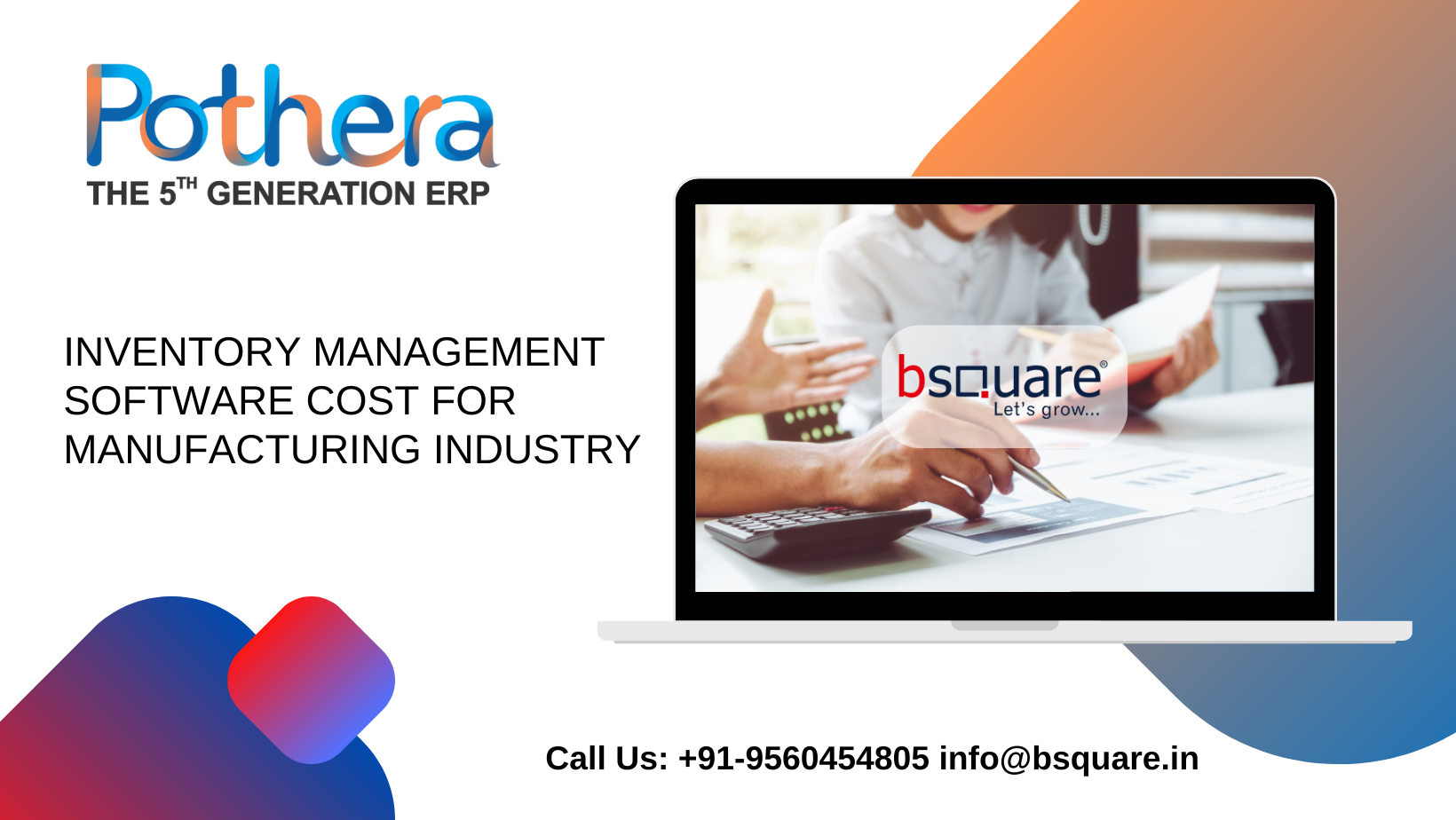Learning About Inventory Costs: A Brief Guide to Saving Money and Increasing Efficiency
Ever wondered how much it actually costs your company to hold inventory? Manufacturing inventory tracking software costs go far beyond the cost of goods bought – they also entail ordering, storage, shrinkage, stockouts, and so much more. Learning about and managing these costs is critical to keeping your business profitable and lean and efficient.
Why Inventory Costs Matter
Inefficient Textile inventory management software cost can potentially lock up capital, generate lost sales, and harm your bottom line. Businesses, therefore, look to the intelligent solutions such as POTHERA ERP that makes optimal inventory management software easy with real-time tracking, automation, and AI-driven insight. With ERP, it assists in making smarter choices with demand planning and real-time cost tracking cut manual labor and expensive errors.
What Are Inventory Costs?
Inventory and manufacturing software expenses are all of the expenses of purchasing, carrying, and maintaining your inventory from storage and purchasing to loss due to damage or obsolescence. They directly affect important financial figures like Cost of Goods Sold (COGS) as well as profitability margin.
The 6 Principal Inventory Costs:
- Ordering Costs – Order handling and shipping cost of inventory orders. For example: Frequent small repeated orders incur more total ordering expenses.
- Holding Costs – Warehouse fees to keep items in stock that are not sold, like insurance. Example: Seasonal items must be stocked differently and contribute to holding costs.
- Stockout Costs – Sales revenue lost when you run out of the item and can’t make a sale. Example: Lost sales revenue during times of high demand because you run out of stock.
- Shrinkage Costs – Losses due to theft, damage, or data errors. Example: Customers are typically willing to sacrifice product to theft or error.
- Carrying Costs – More universal costs of storage and tied-up money. Example: Furniture that is in over-storage doesn’t take up money and space.
- Spoilage Costs – Perishable item losses that spoil or rot. Example: Grocery stores will always throw away expired fresh produce fresh fruits and vegetables.
Test POTHERA ERP and discover effortless, automated stock management that reduces wastage, optimizes planning, and optimizes profitability.
Examples of Inventory management manufacturing software Costs in Real Life
1. Clothing Store
- Situation: Keeps buying seasonals so that it remains in vogue.
- Costs:
- Ordering: Excessive because there are frequent small orders.
- Carrying: Moderate; small inventories, less expensive to warehousing.
- Stockout: Risky during periods of high demand, resulting in lost sales.
- Spoilage: Possible in unused or obsolescent stock.
2. Electronics Warehouse
- Scenario: Hides treasures under cover and air conditioning.
- Costs:
- Stockout: Low due to stable demand; risk higher with sudden surges.
- Ordering: Less, as bulk buy decreases frequency.
- Obsolescence: Risk of sudden technology change.
3. Toy Maker
- Scenario: Anticipating holiday peak demand.
- Costs:
- Stockout: High during holidays, jeopardizing sales and reputation.
- Holding: Higher to satisfy demand.
- Ordering: Order often in demand.
- Obsolescence: Toys are short-lived.
4. Grocery Store
- Scenario: Stores perishable and non-perishables.
- Costs:
- Spoilage: High for short-life goods like milk products and fruits.
- Ordering: Periodic to maintain freshness in stock.
- Holding: Encompasses storage and refrigeration charges.
- Stockout: Shortfalls eat into customer satisfaction and sales.
5. Pharmaceutical Distributor
- Situation: Inventories of mixed shelf lives.
- Costs:
- Holding: High due to regulated storage and vigilance.
- Spoilage: High on outdated medicines.
- Stockout: Catastrophic, affects patient treatment.
- Ordering: Infrequent to maintain supply in hand.
How to Calculate Inventory Costs
- Ordering Cost
- Formula: Total Orders × Cost per Order
- Example: 10 orders × $50 = $500
- Holding Cost
- Formula: Average Inventory × Cost per Unit
- Example: 1,000 units × $2 = $2,000
- Stockout Cost
- Formula: Stockouts × Cost per Stockout
- Example: 5 × $300 = $1,500
- Shrinkage Cost
- Formula: (Recorded – Actual Inventory) × Cost per Unit
- Example: (1000 – 950) × $10 = $500
- Carrying Cost
- Formula: Carrying, holding and capital cost.
- Example: $2,000 + $500 + $300 = $2,800
- Spoilage Cost
- Formula: Spoiled Units × Cost per Unit
- Example: 200 × $5 = $1,000
Real-time monitoring of these costs allows companies to then tweak profitability, lower inventory levels, and lower wastage. With advanced tools like POTHERA ERP, monitoring, forecasting, and controlling such costs on real-time is possible.
Principal Factors Influencing Your Inventory Costs
Understanding the key drivers of textile inventory management software costs helps organizations manage inventory processes effectively:
- Order Quantity: Impacts holding vs. ordering costs.
- Lead Time: Longer lead times require more buffer stock.
- Demand Variability: Unstable demand can result in overstock or stockouts.
- Storage Costs: Larger inventory = higher storage expenses.
- Shelf Life: Perishable goods increase spoilage costs.
- Supplier Dependability: Unreliable suppliers increase the need for safety stock.
- Shrinkage & Obsolescence: Leads to financial losses.
- Economic Conditions: Inflation, interest rates, etc. affect inventory costs.
- Inventory Turnover Rate: Low turnover increases holding costs.
- Technological Integration: Automation improves efficiency and reduces error.
Why Inventory Costs Are Important
- Makes the Business More Profitable
- Improves Cash Flow
- Affects Pricing Strategy
- Encourages Operational Effectiveness
- Reduces Risk
- Facilitates Strategic Choice
How Inventory Costs Affect Your Bottom Line
- Profit Margins: Reduce COGS, improve unit profitability.
- Cash Flow: Free up capital for business growth.
- Operational Costs: Eliminate unnecessary expenses.
- Customer Service: Ensure better availability.
- Financial Accuracy: Maintain clear, accurate reporting.
- Strategic Planning: Enables competitive and responsive actions.
Strategies to Minimize Inventory Costs and Enhance Profitability
Effective Textile inventory management software cost is key to running a profitable and efficient business. By understanding common pitfalls and implementing targeted strategies, businesses can significantly reduce their inventory-related expenses while improving operational agility.

